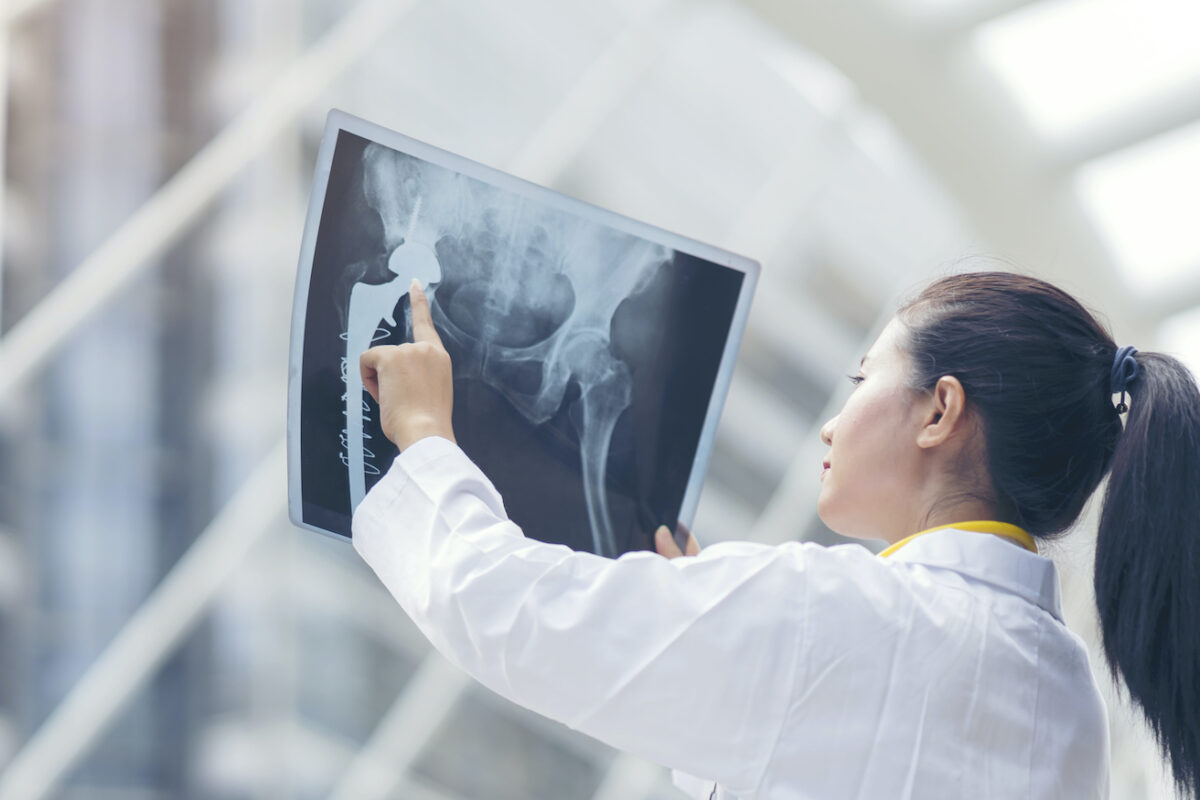


The lymphatic system consists of thin tubes and lymph nodes that run throughout the body. It’s part of the immune system and keeps body fluid levels in balance. A few areas, like bones, were believed to lack lymph tissue. The hard tissue of bone made studying any role the lymphatic system might play especially difficult.
Researchers from the University of Oxford used an animal model to confirm bone contains lymphatic tissue—and that it also plays a significant role in bone healing.
The researchers identified and visualized the lymphatic vessels of bone in high-resolution 3D, using light-sheet imaging. They also identified certain key signals occurring between lymph vessels, blood stem cells, and bone stem cells.
The discovery of these signals could lead to new ways of encouraging the healing of injured bones in older patients.
Lymph vessels were shown not only to be present in bone, but to also play a role in bone and blood cell regeneration. Furthermore, researchers found that aging bones showed reduced growth of lymphatic vessels in response to injury.
The lymphatic system not only serves as an immuno-surveillant and fluid transporter, but it “plays a critical role in shortening bone-healing times,” and maintaining bone strength, said Dr. Akash Kanwal Attreya, a family medicine doctor in Albuquerque, New Mexico, affiliated with Piedmont Macon North Hospital and Holy Rosary Healthcare-Miles City.
He believes the application of this knowledge can lead to improved outcomes in bone care and greater quality of life for patients, and from a global health view, reduced morbidity and mortality.
“The administration of young lymphatic endothelial cells restores healing of aged bones, thus providing a future direction to promote bone healing in elderly,” Dr. Junyu Chen, a co-first author of the study, said in a statement.
Scientists intend to expand on these findings to look at what role lymphatic vessels play in bone-based diseases, such as rheumatoid arthritis, and to discover new approaches to treat bone and blood diseases.
There’s no particular age when our bone-healing ability diminishes, according to Dr. Kate Nixon, an osteopathic physician in neuromuscular medicine.
However, there is “a progressive loss of bone density and size as we age,” she told The Epoch Times. “We see an increase in brittleness and a change in stress and strain properties, making us more susceptible to material failure.”
This becomes more pronounced after menopause for women—around age 50, as it tends to correspond with a decreasing level of estrogen. For men, it is more obvious after the age of 70 because it correlates with decreasing testosterone levels.
There are two methods to stimulate your lymphatic system, and they may help increase your bone healing ability by helping lymphatic fluid to better circulate through your body.
Also called manual lymphatic drainage, this is a special kind of medical massage that can help treat lymphedema. This is when lymphatic fluid collects in certain areas of the body.
Lymphatic massage is used to improve the flow of lymph fluid, which reduces swelling. It’s performed by someone specially trained in this method, and research shows that it can help relieve the symptoms of rheumatoid arthritis.
There is already a method used by osteopaths to manipulate the body to treat muscle, tendon, or bone pain called Osteopathic Manipulative Medicine (OMM).
This is a hands-on treatment method where physicians apply gentle pressure to the body to encourage the body to heal itself.
Kathleen Becker, who holds a doctorate in molecular biology and biochemistry and is faculty at the University of New England College of Osteopathic Medicine, said that this method can impact the lymphatic system. “Though studies have been on a much more macroscopic level and look at facilitating flow through the lymphatic duct and clinical outcomes of lymphatic techniques on infectious diseases,” she said.
Older adults can help bone health by engaging in weight-bearing exercises such as strength training with weights and walking, said Dr. Kathryn Brandt, the chair of primary care at the University of New England College of Osteopathic Medicine at Maine’s Medical School.
They should also eat a diet high in vegetables and low in processed foods.
Becker added that it might also be helpful to include sufficient minerals such as calcium, protein (because bone is also made of protein), and sources of vitamin D, “particularly during the winter months, if you live in Maine!” Becker added.
Brandt considers the University of Oxford’s research to be very interesting and believes it challenges some old assumptions about the resiliency of bone.
“The more we learn about what controls bone rebuilding and healing, the better we can figure out new ways to help with healing,” she said.
